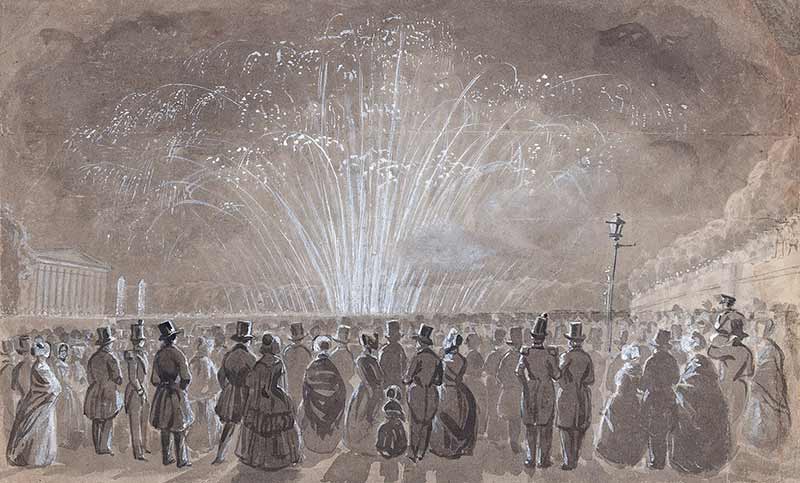Throughout history, human beings have discovered ingenious ways to utilize the power of fireworks beyond mere entertainment. These vibrant displays of light and sound have found themselves thrust into the chaos of battle, where they have served both practical and psychological purposes.
One of the earliest recorded instances of fireworks in warfare comes from ancient China. During the Tang Dynasty (618-907 AD), the Chinese developed fire arrows, an innovative weapon consisting of an arrowhead packed with gunpowder and propelled by a bow—a weapon that combined the deadly precision of archery with the explosive power of fireworks. These arrows would ignite upon impact, creating a fiery panic and damage among enemy ranks. The Tang Dynasty fire arrows were effective tools of strategic and psychological warfare.
In addition to fire arrows, the Chinese also employed “thunder crashers” or “thunderclap bombs.” These explosive devices were packed with gunpowder and attached to kites. As the kites soared above enemy fortifications, the bombs were detonated, creating a thunderous explosion that could disorient or intimidate opposing forces.
During the Middle Ages, fireworks played a significant role in siege warfare. Fireworks were used to disrupt enemy fortifications, demoralize defenders, and create confusion. One popular device was the “trebuchet fire pot” or “fireball,” which consisted of a clay pot filled with flammable materials and attached to a projectile. When launched by a trebuchet, these fireballs could set buildings and structures ablaze, forcing defenders to divert resources and attention away from the battle.
As the Renaissance dawned, the development of gunpowder weaponry revolutionized warfare. Cannons and mortars became prominent features on the battlefield, raining explosive firepower upon enemy forces. These artillery pieces were often accompanied by firework displays to amplify their intimidating effects. The loud booms, bright flashes, and fiery trails left by exploding shells enhanced the psychological impact on both soldiers and civilians.

In more recent history, fireworks have found a place in modern warfare as tools of signal and psychological warfare. During World War II, signaling rockets were used to communicate between troops and coordinate attacks. These rockets, often with different colored payloads, allowed for quick identification and strategic maneuvers.
Fireworks have also been employed to intimidate and demoralize the enemy. During the Vietnam War, the United States military used “Chieu Hoi” or “Open Arms” leaflet bombs, which were essentially fireworks shells filled with propaganda leaflets. When exploded over enemy territory, these shells would scatter thousands of leaflets, attempting to sway the loyalty of enemy troops or sow confusion among their ranks.
While the use of fireworks in battle has diminished with the advent of more advanced weaponry, their historical significance cannot be overlooked. From ancient China to the modern era, fireworks have served as both practical tools and psychological weapons, capable of instilling fear, confusion, and awe. They have played a part in shaping the outcome of battles and left their mark on the annals of military history.


